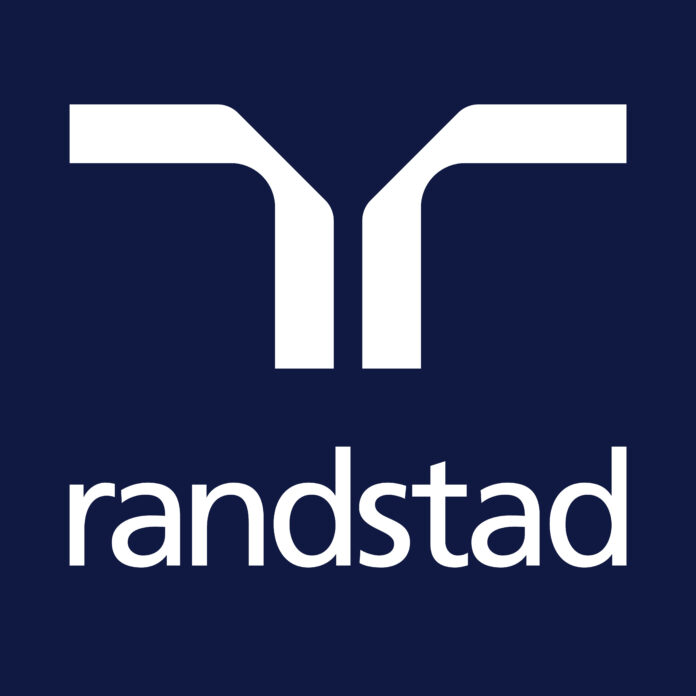When Govia Thameslink Railway (GTR) released its Social Impact Report 2024/25 this week, it didn’t just tick a box for corporate responsibility. Examples like this can set benchmark for how organisations — not only in transport but across the UK economy — can weave social value into the fabric of everyday operations.
Covering five focus areas — cohesive communities, education and employability, diversity and inclusion, environmental sustainability, and positive mental health — GTR reframes the conversation about what a modern public-facing business should deliver. It measures not just the trains that run on time, but the lives improved along the way.
A new standard for social impact
GTR’s report introduces a disciplined, data-driven approach that many larger corporations still struggle to implement. Its use of the Rail Social Value Tool (RSVT), updated in line with HM Treasury’s Green Book and externally validated by social-value specialist Loop, gives credibility to every claim made. By aligning reporting to its business year, GTR also improves transparency and comparability — making the data genuinely useful rather than symbolic.
The result is a model for how measurement, governance and storytelling can combine to create a culture of purpose-driven performance. As Angie Doll, GTR’s Chief Executive Officer, notes in the report:
“Social value is not an add-on, it’s central to how we run the railway.”
That philosophy translates into outcomes that speak for themselves.
- 72 per cent of contracts were with small and medium enterprises (SMEs) — representing £85.9 million in spend and generating £1.58 million of additional social value in local economies. This tripled the company’s previous SME spend.
- The Your Station, Your Community Fund awarded £786,000 to 56 grass-roots projects, reaching more than 35,000 people.
- Apprenticeships and employability programmes created £26 million in social value, with more than 370 colleagues on structured learning paths.
- A partnership with Mind raised £29,000 in six months and contributed to 145 life-saving interventions by staff — a testament to the practical impact of wellbeing initiatives.
Each figure represents more than a statistic; it’s a visible, human-centred return on purposeful investment.
Why this matters beyond rail
The significance of GTR’s blueprint lies in its transferability. Social value isn’t a concept confined to rail franchises or public-sector contracts. Every organisation — from a 10-person engineering firm to a regional logistics company — influences the communities it touches.
Tom Hall, Social Sustainability Principal at the Rail Safety and Standards Board (RSSB), summed it up succinctly:
“GTR shows what’s possible when purpose and performance go hand in hand.”
For SMEs, this is both challenge and opportunity. Many small businesses already deliver social value organically — hiring locally, supporting schools, volunteering in their communities — but rarely measure or communicate it systematically. GTR’s report offers a roadmap for turning goodwill into a tangible, strategic asset.
Turning inspiration into action: lessons for SMEs
1. Make local procurement a deliberate choice.
GTR didn’t reach 72 per cent SME engagement by chance. It set a clear internal target and backed it with process. SMEs can replicate this at a smaller scale by committing to spend a defined percentage with local suppliers or social enterprises. Transparent targets signal intent and make progress visible.
2. Start a micro-fund for community projects.
GTR’s Your Station, Your Community fund demonstrates how modest grants can deliver high-impact results — 35,000 people reached, £786k invested, 56 projects supported. SMEs can create their own micro-funds or sponsorship schemes, even if only a few thousand pounds a year. The key is consistency and storytelling: tracking who benefits and sharing outcomes.
3. Invest in employability and skills.
With £26 million in social value from apprenticeships, GTR proves that training is not a cost but a multiplier. SMEs can tap government-supported apprenticeship programmes or collaborate with local colleges to offer short placements. The dual return — skilled staff and measurable social benefit — strengthens both business capability and reputation.
4. Treat wellbeing as an operational priority.
The 145 life-saving interventions recorded by GTR staff underscore the difference that mental-health training can make. Partnering with local charities or providing basic wellbeing support yields dividends in morale, safety and retention. For smaller firms, even one mental-health first-aider can shift workplace culture.
5. Measure what matters, and validate it.
GTR’s use of the RSVT, underpinned by external verification, elevates its credibility. SMEs can adopt a simplified version: track inputs (time, spend), outputs (people reached, hours volunteered) and outcomes (benefits achieved). Independent feedback — from a partner charity, accountant or local authority — adds authenticity.
6. Co-design with customers and communities.
When GTR redesigned timetables on its West Coastway route in response to passenger feedback, usage and satisfaction rose. SMEs can use the same principle: involve clients or communities in shaping services. Participatory design not only improves products but builds trust.
From compliance to culture
What distinguishes GTR’s approach is that social value is not framed as compliance or corporate philanthropy. It’s part of how the business competes and thrives. The company has embedded social value into procurement, HR, community engagement and reporting — so each function contributes to a shared purpose.
For SMEs, the mindset shift is similar. Social impact should move from the marketing page to the management agenda. Once embedded, it drives innovation (new products and partnerships), attracts talent, and opens doors to contracts that now require social-value evidence — especially in public procurement.
A replicable framework for purposeful growth
To make social value practical, SMEs can adopt a simple framework:
- Focus – choose one or two themes aligned with your strengths (skills, environment, inclusion).
- Measure – record quantitative and qualitative outcomes.
- Communicate – share both numbers and stories internally and externally.
- Collaborate – partner with local groups or other SMEs to scale impact.
- Review – publish a short annual impact note and refine targets.
Small steps, measured well, can create compounding value — for business and society alike.
The bigger picture
As the rail sector prepares for public ownership and a new industry model, GTR’s example carries wider resonance. It demonstrates that when organisations embed purpose into core operations, the results extend far beyond balance sheets: stronger communities, better wellbeing, and more resilient local economies.
For SMEs, the takeaway is clear. Social value isn’t a luxury reserved for large corporates with sustainability teams. It’s a competitive advantage waiting to be claimed — through everyday decisions, transparent reporting and authentic partnerships.
In the 200th year of Britain’s railways, GTR has shown what it means for a service to truly serve. The challenge now is for the rest of industry — large and small — to get on board.
Govia Thameslink Railway’s Social Impact Report (Jan 2024–Mar 2025) has been released this week, and reads less like a dry corporate summary and more like a playbook for how a transport operator can embed social value into everything it does.
Across five clear workstreams — cohesive communities, education & employability, diversity & inclusion, environmental sustainability and positive mental health — GTR combines hard data with human stories and third-party validation to show what “social value as business-as-usual” looks like.
Headlines you can’t ignore
• GTR radically shifted procurement to benefit local suppliers: 72% of its contracts in 2024 went to SMEs, with total SME spend rising to about £86 million and an estimated £1.58m of social value generated.
• Its Your Station, Your Community fund awarded roughly £786,000 across 56 projects, reaching more than 35,000 people — and an independently validated social-value return for the 2024/25 grants.
• Workforce and skills investment is measurable: apprenticeships alone generated an estimated £26m of social value, while targeted programmes (Get Into Railways, SWAP, Career Returners) are converting trainees into hires.
• GTR combines measurable outcomes with wellbeing action: a three-year partnership with Mind generated £29,000 in six months and staff made 145 life-saving interventions during the period — a reminder that social programmes can and should protect people as well as create opportunity.
• Importantly, GTR upgraded how it measures value: the Rail Social Value Tool (RSVT) was updated and its Your Station, Your Community calculations were validated by Loop, aligning measurement to HM Treasury Green Book principles.
Why this matters for SMEs
GTR’s report proves two things SMEs already know instinctively: local partnerships and workforce investment deliver direct benefits to communities — and, done well, they also strengthen business resilience and reputation. Where GTR is useful as a model is in the mechanics: clear targets (e.g., % of spend with SMEs), small-scale funding that scales (the community fund), validated measurement (RSVT + external validation), and storytelling that links numbers to lives.
Practical moves SMEs can borrow from GTR
- Set a simple target on local impact. GTR publicly reported “72% of contracts to SMEs” as an explicit metric — small firms can set measurable goals (e.g., 30–50% of supplier spend locally or X number of local hires per year) and report progress annually.
- Create a micro-grant or sponsorship window. Even a modest monthly/quarterly fund (e.g., £1k–£10k) to support local community projects builds reputation, unlocks partner networks and produces tangible outcomes you can cite in proposals — GTR’s Your Station, Your Community fund is a clear template.
- Invest in apprenticeships and returner programmes. Structured entry routes (short training blocks, SWAP-style placements or career-returner support) can be cheaper than recruitment and yield loyal, skilled staff — GTR’s apprenticeship and returner approaches are producing both jobs and measurable social value.
- Measure, validate, tell the story. Use a simple social-value framework (even a spreadsheet with outcomes, beneficiaries and estimated financial proxies), then invite independent verification for your biggest initiatives. GTR’s use of the RSVT and external validation by Loop shows how measurement strengthens credibility.
- Prioritise mental-health and safety training. Small firms often underinvest here. GTR’s partnership with Mind and its colleague training (and the reported life-saving interventions) underline that wellbeing programmes protect people and reduce long-term costs.
- Co-design with your customers. GTR’s West Coastway timetable redesign — shaped by public feedback — delivered measurable usage gains. SMEs can replicate co-design on smaller scales: customer panels, user testing or community consultations often reveal low-cost, high-impact improvements.
A lightweight roadmap for SMEs (quick checklist)
• Pick 1–2 focus areas (skills, local procurement, mental health).
• Set one measurable target and a 12-month action plan.
• Launch a micro-grant or staff volunteering day.
• Track beneficiaries and outcomes (hours delivered, people reached, jobs created).
• Publish a short annual impact note (numbers + one human story).
• Where possible, get an external sanity-check on your approach.
GTR’s Social Impact Report shows that social value isn’t a sideline — it can be a growth engine. For SMEs, the lesson is pragmatic: you don’t need a huge CSR budget to make an outsized local difference. Start small, measure what matters, and share the stories behind the numbers. That combination — outcomes + narrative + external validation — is what turns community goodwill into competitive advantage.





